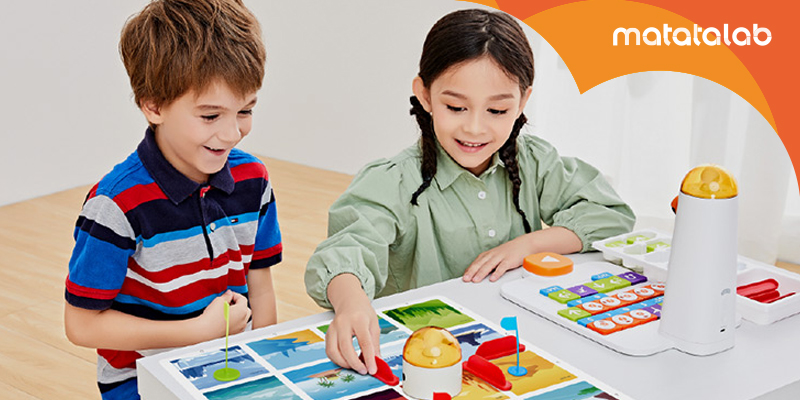
The Wonders of Useful Coding Robots for Kids
The Wonders of Useful Coding Robots for Kids
In our tech-driven world, coding is no longer a niche skill confined to programmers; it has become an essential tool for problem-solving, critical thinking, and creativity, even for the youngest minds. The challenge lies in introducing coding to kids in an engaging, fun, and hands-on way. Enter the exciting world of coding robots for kids, an interactive companion that bridges the gap between abstract code and tangible, physical movement. In this blog post, we will tap into the benefits of coding robots for kids and delve into two popular offerings from Matatalab, a company dedicated to making coding accessible and enjoyable for children.
Why Coding Robots for Kids is a Perfect Solution:
Q1: What makes coding robots a unique learning experience for children?
A1: Coding robots provide a distinct learning experience by offering a tactile and interactive approach, unlike traditional screen-based coding. Children physically build, program, and experiment with these robots, solidifying their understanding of coding concepts through hands-on activities.
Q2: Why are robots considered inherently captivating for kids in the context of learning to code?
A2: Robots are inherently captivating because children can witness their creations come to life. The ability to see robots move, beep, and respond to commands fuels excitement, motivating kids to explore the world of coding further. Learning becomes a joyful exploration as they directly observe their code’s impact on the robot’s physical behavior.
Q3: How do coding robots contribute to the development of STEM skills in children?
A3: Coding robots for kids seamlessly integrate Science, Technology, Engineering, and Math (STEM) disciplines. By building and coding robots, children develop essential skills such as problem-solving, computational thinking, and engineering. This hands-on approach encourages a holistic understanding of STEM concepts.
Q4: In what way do coding robots foster creativity among kids?
A4: Coding robots empower kids to bring their imagination to life. Beyond coding for functionality, children can customize their robot’s appearance, program unique behaviors, and even create obstacle courses or games. This creative aspect enhances the overall learning experience, fostering a sense of ownership and encouraging imaginative exploration.
Q5: How does the variety of coding robots cater to different age groups and skills?
A5: Coding robots offer a variety suitable for every child’s age and proficiency. There’s a coding robot for everyone, from simple beginner robots controlled by visual blocks to advanced models with complex programming languages. This versatility ensures that the learning journey is both accessible and challenging, adapting to each child’s evolving skills.
Matatalab: Making Coding Accessible and Enjoyable
Matatalab is a trailblazer in educational technology, focusing on making coding accessible and engaging for children. They offer a variety of hands-on coding robots for kids designed to spark creativity, develop critical thinking skills, and introduce learners to the fundamentals of coding in a fun and interactive way. Let’s explore two of their popular offerings:
Matatalab Pro Set:
-
- Ideal for: Classrooms and groups (ages 4+)
- What it is: A comprehensive coding solution with multiple robots, interactive mats, and a block-based programming app.
- Key features:
-
-
- Multiple robots: Includes 6 Coding Turtle robots and 1 Control Hub, enabling collaborative learning and individual exploration.
- Interactive mats: Large floor mats with coding instructions and challenges provide a tangible learning environment.
- Block-based programming: An easy-to-use app with drag-and-drop blocks makes coding accessible for young learners.
- Focus on: Teaches fundamental coding concepts like sequences, loops, and conditional statements.
- Additional features: It comes with a storage bin, activity cards, and a charging station for convenient organization and learning.
-
Tale-Bot-Pro:
-
- Ideal for: Individual learning (ages 3+)
- What it is: A single programmable robot with various modes and features designed for creative play and early coding exploration.
- Key features:
-
-
- Graphical programming: An easy-to-use app with visual blocks makes coding intuitive for young children.
- Voice recording: Personalize the coding robots for kids with funny sounds, stories, or even multilingual greetings.
- Focus on: Developing early coding concepts, storytelling skills, and problem-solving abilities.
-
Benefits of Matatalab Solutions:
- Screen-free Learning: Matatalab solutions encourage physical interaction, reducing screen time and promoting a healthier learning environment.
- Engaging and Fun: The inherent appeal of coding robots for kids fosters motivation and active involvement. It also creates a positive attitude toward coding.
- Scalable and Adaptable: Suitable for individual or group learning, Matatalab solutions are available in Dubai and other regions in the UAE. They offer varying difficulty levels, ensuring scalability and adaptability for diverse learning environments.
- Develops STEM Skills: Matatalab’s coding robots for kids introduce logic and problem-solving in a fun and accessible way, laying the foundation for future STEM proficiency.
In conclusion, coding robots for kids has emerged as a transformative tool for introducing the exciting world of coding. Matatalab, with its commitment to accessibility, engagement, and educational excellence, stands out as a leader in this field. By providing hands-on, interactive, and fun coding experiences, Matatalab’s robots teach coding concepts and nurture creativity, problem-solving skills, and a love for learning.









Recent Comments